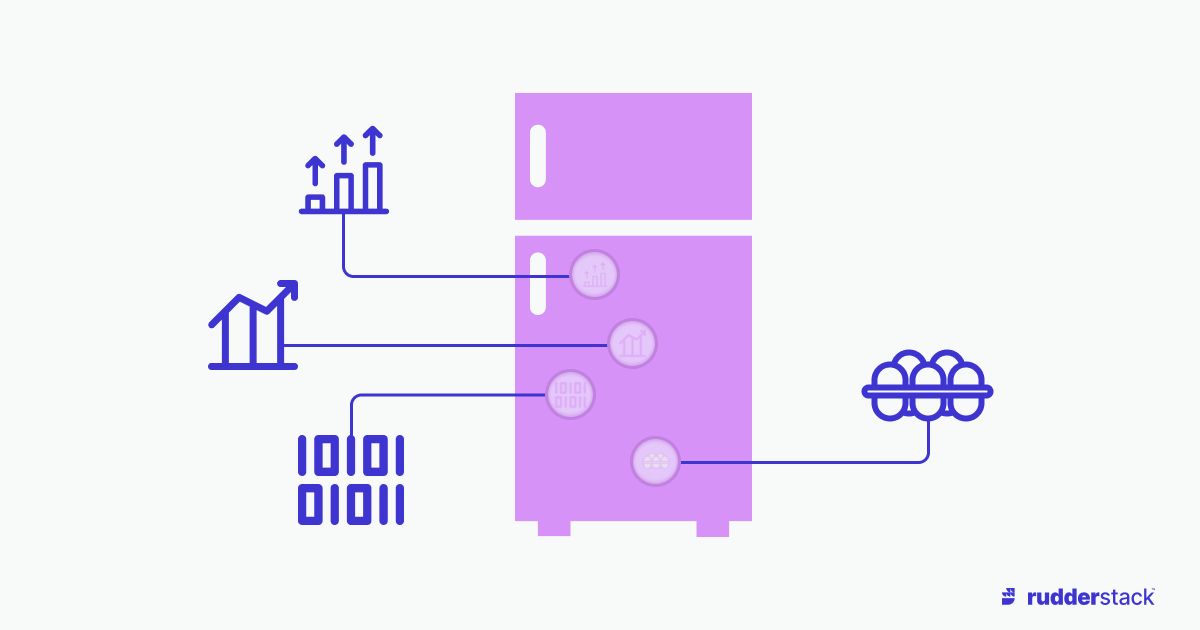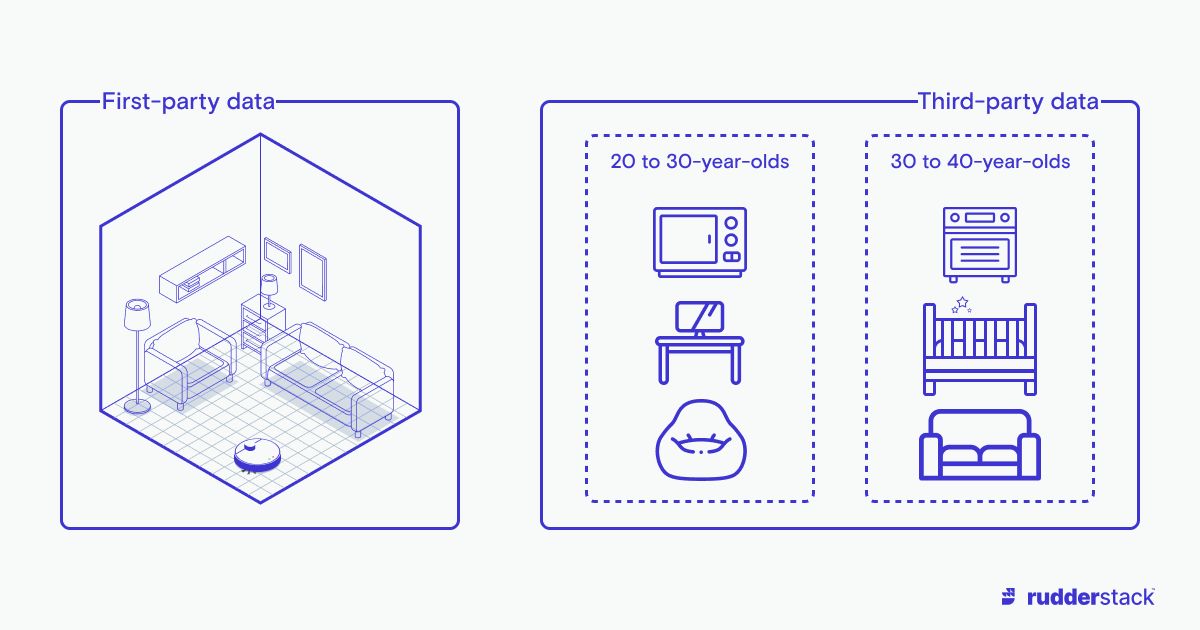🗓️ Live Webinar November 9: How HealthMatch.io Used Customer.io and RudderStack to Launch Their New Business Model in 24 Hours
Learning Center
Learning Topics
Customer Data
Data Warehouse
- How to Create and Use Business Intelligence with a Data Warehouse
- Data Warehouse Architecture
- Best Practices for Accessing Your Data Warehouse
- What Is a Data Warehouse?
- Data Warehouse Best Practices — preparing your data for peak performance
- How do Data Warehouses Enhance Data Mining?
- Data Warehouses versus Databases: What’s the Difference?
- What are the Benefits of a Data Warehouse?
- Key Concepts of a Data Warehouse
- Data Warehouses versus Data Lakes
- Data Warehouses versus Data Marts
- How to Move Data in Data Warehouses
- Difference Between Big Data and Data Warehouses
Data Security

Subscribe
We'll send you updates from the blog and monthly release notes.
Learning Center
Customer Data Management
Whether your business is looking to personalize customer experiences, optimize internal reporting and forecasting, or meet regulatory requirements with customer data, you need a plan for those bytes pouring into your databases and SaaS tools. Customer data management (sometimes known as “customer database management”) is a common umbrella term for the strategies a company uses to collect, control and use its customer data. A customer data management (CDM) strategy covers everything from data privacy compliance to data systems used to manage and distribute customer data. Well-designed CDM strategies will also serve as common reference points and documentation to ensure that customer data processes and use are standardized on a company-wide scale, even between teams that don’t have direct contact.
What a CDM strategy covers
The many needs of any company actively collecting and using customer data make a long and diverse list for anyone designing a CDM strategy. No matter the specifics, the core goal is to maximize internal access to customer data, while enforcing any necessary restrictions on access to and use of that data. Let’s break down the individual issues that need that need to be addressed to accomplish that goal.
Data tooling: ingestion, storage, pipelines, processing, and activation
Customer data management plans need to map all existing data tooling, including their relationships with each other as well as why and how they are used. They also need to provide clear guidance and processes for adding new tools (more on this below). This tooling map should include the entire spectrum of the stack, from initial ingestion to storage and activation.
Data fidelity and freshness
Proper planning also demands that customer data be managed to ensure fidelity and prevent decay.
As data travels through your company, it is offered opportunities to decay in value and coherence. Perhaps older data uses a timestamping convention incompatible with current schemas. Maybe a server fails to collect certain metadata for a chunk of transactions, leading to a gap in a vital historical analysis. And although data on modern cloud storage isn’t rotting away like bytes on a magnetic strip, human error can lead to permanent data corruption or even loss.
Clear documentation of your CDM standards is important. This keeps everyone involved in data management on the same page, and prevents data degradation and siloing at an organizational level, even before software tools designed to solve the many challenges of data management are deployed. Additionally, making the whole structure legible across the company empowers a wider range of users to consume the fruits of customer data.

Much of customer data management is about keeping your information fresh.
Controls on customer data
Smart permissions management is critical when it comes to customer data. Maximizing the internal access to customer data doesn’t mean enabling indiscriminate access. Sensitive customer information can and should be protected on a need-to-know basis. A certain amount of discretion needs to be baked in along with access to customer data, and planning this out in advance prevents leaks.
Regulatory obligations are another hurdle that customer data management solutions must clear. Strong initial designs — alongside work with legal experts — will be more likely to achieve compliance. Another advantage of advance planning is that it allows for scaling to meet any future external guidelines.
User-generated data
Not all customer data is gathered through passive monitoring. Customer data management should not overlook considerations related to customer surveys and other user-generated data acquisition mechanisms. To get the best use of these additional data inputs, and to future-proof data systems for incoming customer responses, any data generation should also conform to the schemas used for data systems, pipelines, and storage.
Shopping for the right tools
A central part of the CDM planning process is provisioning appropriate data systems to manage your customer data.
It is likely that anyone working on a management strategy already has a data stack, so CDM planners face the challenge of finding tools that can integrate into their existing systems. In most cases where additional customer data management is required, a data warehouse already exists, but there are a variety of specific tools that comprise a stack, from data ingestion to application outputs.
- Customer data platforms (CDPs) manage internal customer data for long-term usage, scaling well to compound internal value.
- Customer feedback platforms (CFPs) are tools that handle data generation and customer data generated by your company.
- Data management platforms (DMPs) are used to store and traffic third-party vendor data.
- Customer relationship management (CRM) tools are crucial in any business case with hands-on interaction between you and your customer.
- Data ingestion mechanisms are often developed by vendors or integrated into internal application structures, but there are sometimes substantial decisions or updates to make here, like updating from ETL to ELT.
- Particular internal applications need their own tools to handle. Whether the use case is financial forecasting or synthetic customer data from AI models, relevant teams will know what tools they need for this purpose.
There are a lot of tools and use cases to consider here. One way to simplify the requirements analysis is to break down the types of data that need processing. There’s a vast difference in the usage and tool requirements between data that your own company has collected and data provided by a third-party vendor.
The first-party data distinction
What’s the difference between first-party and third-party data? First-party data is any customer information supplied by the customer or created in house, as opposed to third-party data, which can be purchased from a vendor. When researching a CDP, it’s important to keep in mind the following particularities of first-party data:
- The exclusive nature of first-party data makes it valuable. For many companies, first-party data constitutes their crown jewels and the foundation of their business model. It should always be secured, and any distribution internally or externally needs to be carefully thought out.
- Furthermore, although first-party data is a useful commodity, it can also carry burdensome responsibilities in terms of regulatory control (such as GDPR or CCPA). These responsibilities, taken together with the trust customers have in brands that are handling their personal data, means it is vital that you can trust the software that handles your first-party data.

A robot vacuum could collect your room layout as first-party information, whereas aggregations of information about demographically typical furniture could be sold by a vendor as third-party information.
Hitting the books
Once you have definite expectations for your data stack, it’s time to do some research.
Researching customer data systems
Depending on what type of customer data you are deploying, you may need to sift through a variety of different CDPs and DMPs to find a product that fits your data stack. While the two categories of products are not interchangeable and service different types of customer data, changes to privacy standards are increasingly privileging first-party data, typically the domain of CDPs. Be sure to read up on the usage and difference between the tools before planning your stack.
One good source for comprehensive information about CDP providers and their relative advantages is the Customer Data Platform Institute, a market research group that provides reports and categorization for CDP platforms. Capterra offers another list service, with similar filter options.
Researching CRMs
For businesses focused on customer service, CRMs are an irreplaceable key for unlocking satisfaction and retention. CRMs can vary widely in specifics, but one central variable is the internal satisfaction of your coworkers with a particular product. If a given product has features that conflict with your business’ flow, the sheer throughput in a typical CRM can cause minor efficiency hangups to compound as large-scale efficiency losses.
Picking the right CRM for your business is often a matter of internal testing and iteration, but you should also keep in mind the core data needs and scaling potential. Because CRMs require familiarity and benefit from efficiency, it is often painful to switch systems once one is in wide use.
Putting together a plan
Customer data management is about pulling order from chaos. Done right, a customer data management strategy establishes a shared source of truth, regularly updated with customized data from all the sources you have (or want to provide). Competent customer data management shakes out errors and anomalies. Combined with other procedures like identity resolution to enhance first-party data, it provides your company the edge it needs to remain competitive.
Get the Data Maturity Guide
Our comprehensive, 80-page Data Maturity Guide will help you build on your existing tools and take the next step on your journey.
Get the GuideBuild a data pipeline in less than 5 minutes
Create an accountSee RudderStack in action
Get a personalized demoCollaborate with our community of data engineers
Join Slack CommunityThis site uses cookies to improve your experience. If you want to learn more about cookies and why we use them, visit our cookie policy. We’ll assume you’re ok with this, but you can opt-out if you wish Cookie Settings.